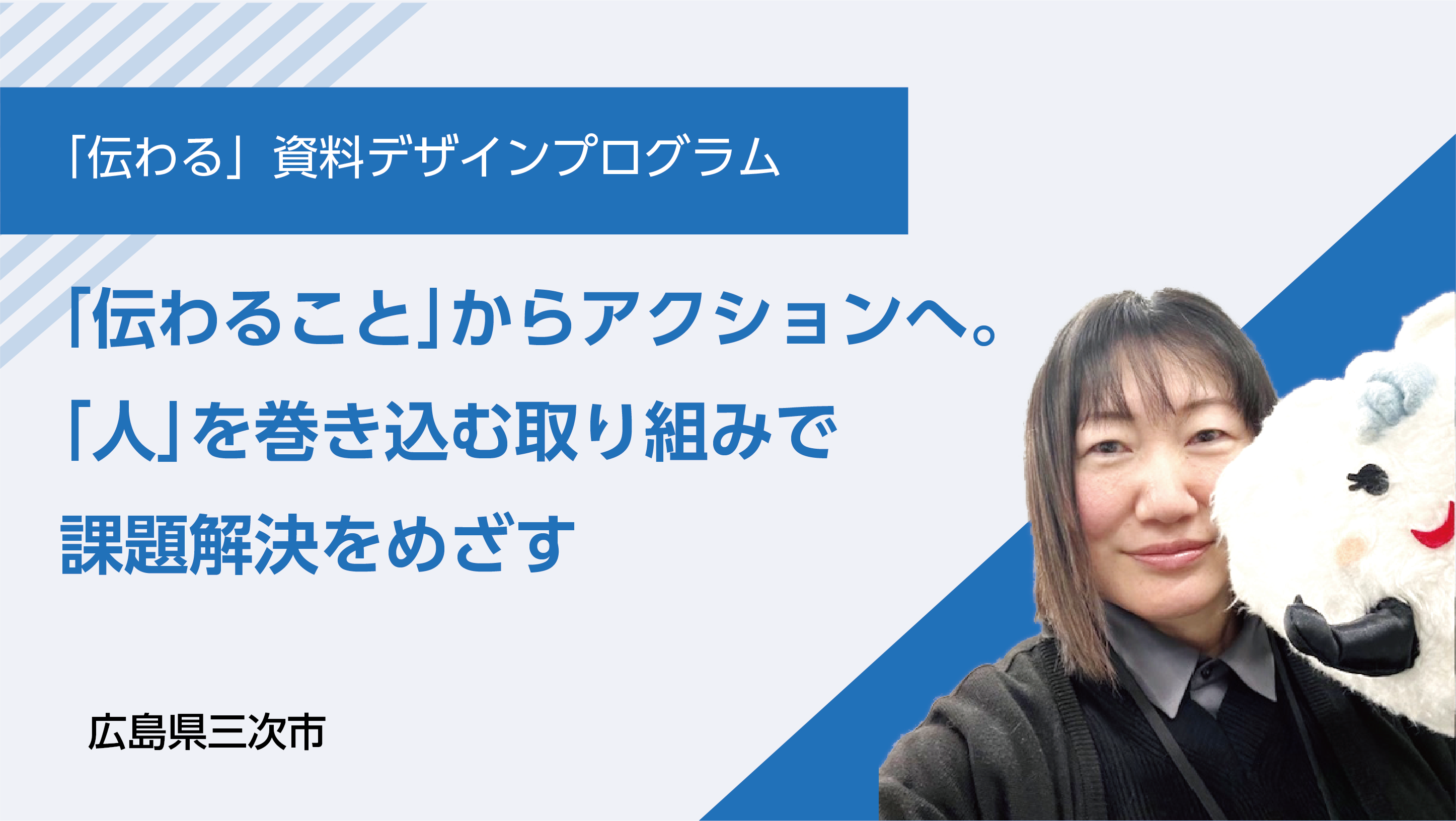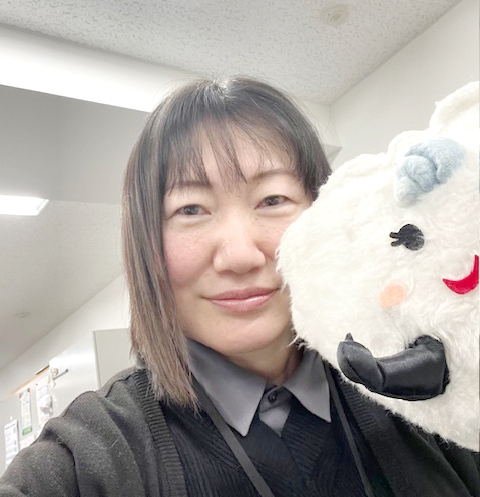
Miyoshi City in Hiroshima Prefecture is located almost in the center of the Chugoku region and is easily accessible with two expressways crossing it. 3 rivers converge in the basin, and the "Sea of Mist" can be seen from autumn to early spring, attracting many visitors every year. In addition, the Miyoshi Cormorant Fishing Festival, which has continued for more than 400 years, is a summer tradition.
In addition, the town is rich in nature and has a profound history and culture, including wine, Pione, and mononoke.
In addition, the company is actively promoting initiatives in childcare, education, medical care, community development, and DX, aiming to make the lives of its citizens more convenient and affluent.
For this interview, we spoke with Mr. Yasumoto of the Secretarial and Public Relations Division about the agency's efforts to disseminate information and the city's appeal with the involvement of local residents.
Civic pride is fostered from building with citizens
Q.Please tell us about the specific activities of Miyoshi City's initiatives, such as information dissemination and consideration for residents, and any issues you are facing in the process.
Yasumoto: Miyoshi City began city promotion efforts in 2021, and decided "Miyoshi, good people, good energy" as the brand message of Miyoshi City, and has been communicating it to the city and beyond.
When deciding on the brand message, we also wanted to "create it together with the citizens," so we held a citizens' vote to make the decision.
In addition to the Web-based voting, we also set up voting boards at commercial facilities in the city to encourage people to vote for the brand message while shopping, thereby involving citizens in deciding the brand message and fostering civic pride.

It is important to convey the message to others. From "getting the message across" to "connecting" and then to action.
Q.Please tell us about specific activities that Miyoshi City is involved in, such as information dissemination and consideration for residents.
Yasumoto:When it comes to information transmission, we place importance on "getting the message across to the recipient. I think it would be wonderful if the recipients of the information would take action as a result of it.
Specifically, we use UD fonts in our PR papers and home pages to provide information that is easy for everyone to read. We are also making efforts to disseminate information using digital content and social networking services. We have introduced Catalog Pocket, which is very convenient because it allows users to read PR papers on their smartphones and has voice reading and search functions. We initially introduced the Catalog Pocket to strengthen our communication to foreign residents, but recently, the large text display and the voice-reading function have been well received by the elderly as well.
*Click here to see the contents of Miyoshi City.
We also use UD font when creating card-type articles on our official line, which has been well received for its easy readability and clarity. Thanks to this, we have about 15,000 friends, which is a very high percentage (about 321 TP3T) in terms of the size of our city.
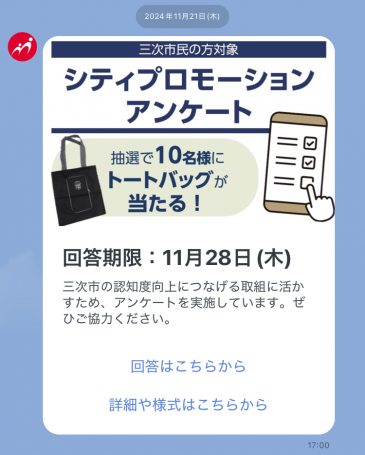
Q.As you work to solve local issues, how do you see collaboration with the private sector?
Ms. Yasumoto: In our staff training, we provided training on creating easy-to-read materials. We would like to continue to create a system that will enable each staff member to rediscover the charms of Miyoshi City and disseminate information on their own.
Some of the staff members in charge had long been very conscious of the need to use UD fonts, and some of them even used UD fonts for their everyday e-mail software.
In this context, I had been interested in UD fonts for some time, but the training I received from Morisawa seemed to have convinced me to actively use UD fonts, and I think my awareness of actively using UD fonts has grown stronger.
Other situations in which we have seen changes are in our efforts to inform the public through cable TV.
In the past, many of the drafts for the cable TV program were the same as the previous year's drafts, but after the training, we reviewed the original data and rewrote the drafts to emphasize the date, time, and numbers as we learned in the training. After the training, however, they are clearly making use of what they have learned, such as reviewing the original data and rewriting the draft to emphasize dates, times, and numbers as taught in the training, and they are increasingly aware of the changes that have been made.
Create an environment where employees themselves want to communicate. Visualize what is conveyed to residents through "Agency Public Relations
Yasumoto:Miyoshi City publishes "MIYOSHI TIMES" (irregularly), an in-house newsletter that introduces articles that have received a high number of LINE registrations and likes, and provides feedback to employees. This is because we believe that when staff members feel that information is being conveyed to a large number of people, they are motivated to actively disseminate information and to do so in an easy-to-understand manner.
I think every municipality has the problem that "departments other than public relations have little enthusiasm for information dissemination and public relations" as a concern.
I thought about publishing an in-house PR magazine to see if there was something I could do to encourage staff members to want to send out their own messages. I thought it would be motivating to give back to them the knowledge that what they have communicated has been properly conveyed and given form.
I believe that when people see the manuscripts that I have created and know that people respond well to them, they will think about making the next article even better.
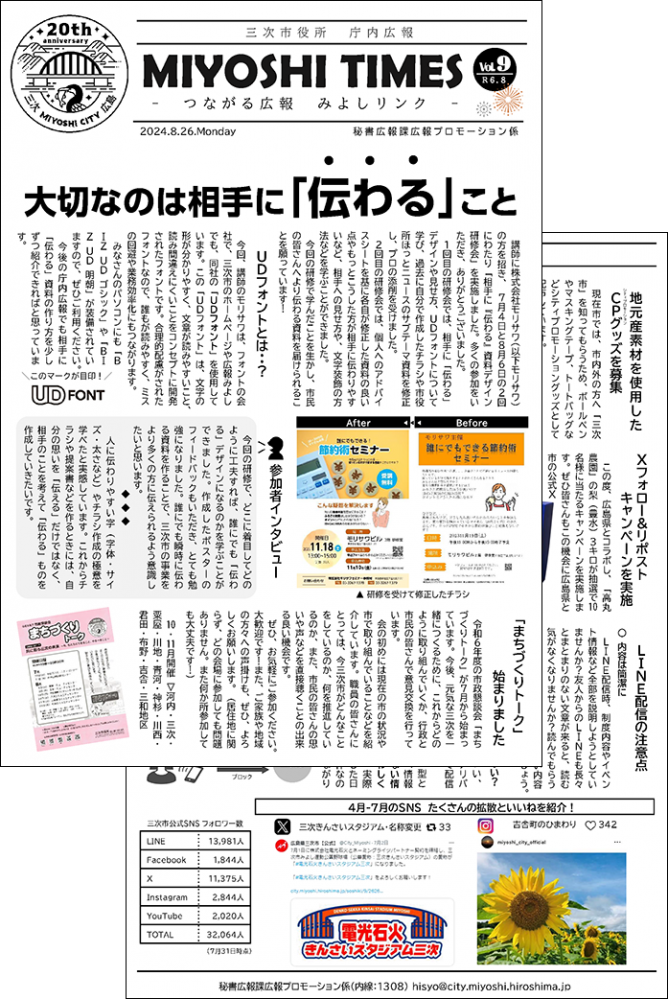
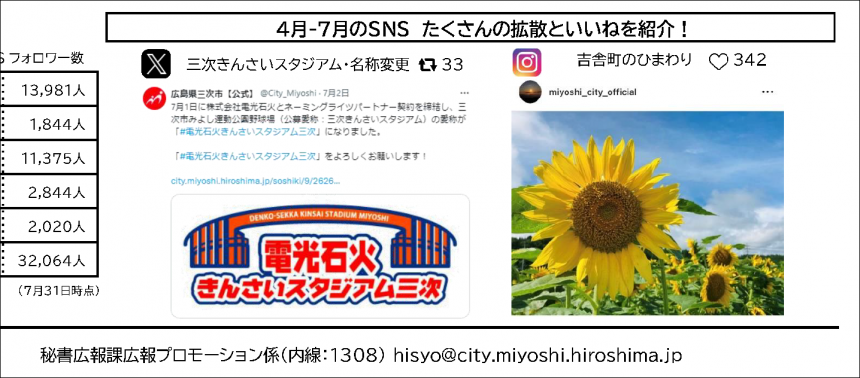
The desire to "love where you live, both the community and the staff," is the first step in solving local issues.
Yasumoto: Miyoshi City is promoting efforts to enhance the attractiveness of the community based on "connection" and "co-creation" by promoting the expansion of the diverse "Tsunagari population" within and outside the city and developing public-private partnerships to solve regional issues. In promotional activities, Miyoshi City is implementing initiatives to increase awareness of Miyoshi's attractions by communicating them to people outside the city.
However, we believe that these efforts will be difficult unless we work together with the local people, and as mentioned in the civic pride that was fostered at the beginning of the discussion, it will be difficult to make progress in solving local issues unless both the community and staff feel that they love where they live.
Q.As you work to solve local issues, how do you see collaboration with the private sector?
Yasumoto: We believe that we need the cooperation of the private sector to do what the community and local government alone cannot do. In our cooperation with Morisawa, the way we present our materials, which we learned from the training we conducted last year, is very important, and we believe it is meaningless if it is not communicated.
If Morisawa can provide support in these areas, and if what is learned is conveyed well when communicated to the community, it will motivate the staff, so I think it is important to have such a cycle.
In the training, they also mentioned universal design, which was a good opportunity for me because I had never had a chance to learn about this kind of concept before. I think it was a good opportunity for them to realize that font selection is also important in this context.
Morisawa: What struck me when Mr. Yasumoto told me about Miyoshi City's efforts this time was the keyword "involve". This is true not only for the public relations department, but also for the government's internal public relations efforts to involve other departments, and for example, to hold a referendum on the brand message to involve residents. We were taught once again that it is not only the public relations staff who are involved in information dissemination, but also people from various positions working together to strengthen information distribution and city promotion.
We would be happy if the importance of "getting the message across" and the importance of choosing the right font, which we discussed in our Morisawa training sessions, were of any help in these efforts to involve the public. We hope to continue to collaborate with them in their efforts to distribute information.
We at Morisawa offer training materials and optimal fonts for local governments to support branding for their organizations.
Notice
Training to improve public relations skills! Design Program for "communicative" materials
Morisawa has launched a training program for public organizations, school staff, faculty members, and companies this year to help them design materials that "communicate" with the public.
This is a training program by a font maker that explains the art of document creation in an easy-to-understand, logical manner, and supports the development of document creation skills that do not rely solely on good taste.
For more information, along with municipal case studies, seehere (place close to the speaker or where the speaker is)for more information.
Municipal Enactment Font to enhance local branding
At a time when municipalities are required to diversify their information disseminationFace (brand image)To clarify theVoice (font)Why not strengthen your local branding by unifying the
Effectiveness of Municipality-established Fonts
Strengthen local branding
Smooth city promotion
Establishment of regional identity
Fostering Civic Pride

For more information.here (place close to the speaker or where the speaker is)Please refer to the documents in the following section.

